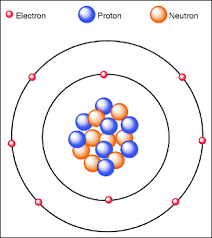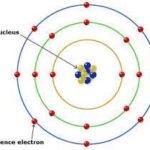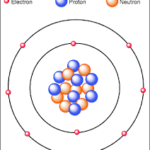The oxygen atom is a powerful player in our universe. It’s not just essential for life; it’s everywhere. Let’s explore what makes oxygen so important, from its atomic structure to its role in our lives and environment.
The Atomic Structure of Oxygen
Electron Configuration and Shells
Oxygen has an atomic number of 8, meaning it has 8 protons in its nucleus. It also has 8 electrons. These electrons are arranged in two energy levels or shells. The first shell holds 2 electrons, while the second shell, which can hold up to 8, contains the remaining 6 electrons. This configuration gives oxygen its strong reactivity.
Isotopes of Oxygen: 16O, 17O, 18O
Oxygen has three stable isotopes:
- 16O: This is the most abundant, making up about 99.76% of oxygen on Earth.
- 17O: A rare isotope, forming only about 0.04% of natural oxygen.
- 18O: This isotope constitutes about 0.20% of oxygen found in nature.
These isotopes play important roles in science, specifically in climate studies and biological research.
Atomic Radius and Properties of oxygen atom
The atomic radius of oxygen is relatively small, around 60 picometers, which contributes to its strong ability to attract other atoms. This property, known as electronegativity, is vital in forming compounds and participating in chemical reactions.
Oxygen’s Chemical Properties and Reactivity
Oxidation and Reduction Reactions
Oxygen is known for its role in oxidation reactions. It easily combines with other elements, leading to the loss of electrons. This process is essential in energy production and combustion in various settings.
Formation of Oxides
When oxygen atom reacts with metals or non-metals, it forms oxides. Examples include:
- Iron oxide (rust)
- Carbon dioxide (from combustion)
These compounds are significant in everyday life and industrial processes.
Oxygen’s Role in Combustion
Without oxygen, fires wouldn’t exist. It combines with fuels to release energy, producing heat and light. This reaction is common in engines, heaters, and even in cooking.
Oxygen’s Role in Biological Systems
Respiration and Energy Production
Oxygen atom is crucial for respiration. In humans and many animals, we inhale oxygen, which our cells use to break down glucose for energy. This process is vital for survival.
Photosynthesis and Oxygen atom Production
Plants take in carbon dioxide and sunlight to produce glucose and oxygen through photosynthesis. This process creates the oxygen that sustains life on Earth. Without it, our atmosphere would look entirely different.
Oxygen’s Role in the Human Body
Oxygen supports vital bodily functions, including:
- Maintaining healthy brain function
- Supporting cellular metabolism
- Aiding in healing processes
A lack of oxygen can quickly lead to severe health issues.
Industrial Applications of Oxygen
Steel Manufacturing
Oxygen is heavily used in the steel industry. It helps convert iron ore into steel through various processes, enhancing the metal’s strength and durability.
Healthcare and Medicine
In the medical field, oxygen therapy is essential. It helps patients with respiratory issues breathe easier and recover from surgeries.
Welding and Cutting
Oxygen is paired with fuel gases to create high-temperature flames used in welding and cutting metals. This process is vital in construction and manufacturing.
Environmental Impact and Considerations
Ozone Layer Depletion
Oxygen compounds can form ozone in the stratosphere, which protects us from harmful UV radiation. However, human activities have led to ozone depletion, raising environmental concerns.
Air Pollution and its Effects
Air pollution reduces the quality of oxygen we breathe. It can lead to respiratory diseases and environmental damage. Understanding how to control pollution is vital for health.
Climate Change and Oxygen Levels
Climate change affects global oxygen levels. As temperatures rise and ecosystems change, oxygen production can be disrupted. Monitoring these changes is critical for sustainable solutions.
Conservation and Sustainability
Preserving oxygen-producing ecosystems, like forests and oceans, is vital for maintaining atmospheric balance. Efforts in conservation can help mitigate environmental degradation.
Conclusion: Understanding Oxygen’s Significance
Oxygen is much more than just a gas we breathe. It plays pivotal roles in biology, industry, and the environment. Understanding this element’s significance can lead to better appreciation and protection of our planet.
Key Takeaways and Summary
- Oxygen is essential for life, energy production, and numerous industrial processes.
- It is crucial for respiration and photosynthesis.
- The environmental impact of oxygen-related processes is significant and requires proactive measures for sustainability.
Future Research and Applications
There’s still much to learn about oxygen and its various forms. Ongoing research may lead to innovative uses in energy sources, healthcare, and environmental protection.
Importance of Oxygen in Everyday Life
From breathing to powering our vehicles, oxygen is everywhere. Recognizing its importance will help us value and protect this vital element for generations to come. view images







1 thought on “Unveiling the Secrets of the Oxygen Atom 2025”